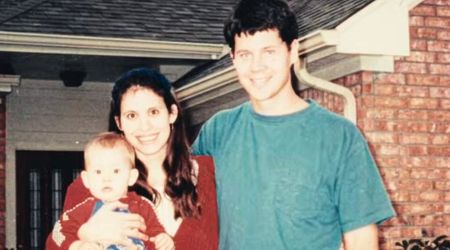'Dead to Me': Netflix's dark comedy made a brilliant move by keeping Ted out of the narrative

When we first watched Liz Feldman's 'Dead To Me', we were astounded – at the sheer number of twists, sure, but even more so on how the show practically wrote a testament to female friendships.
'Dead To Me' follows Jen Harding (Christina Applegate), a real estate agent and a sardonic widow who is determined to solve her husband’s recent hit-and-run murder. At her peak determination to nail the person responsible, Jen meets Judy Hale (played by Linda Cardellini). They first meet at the grief support group that Jen joins. Linda plays the role of an optimistic free spirit who has suffered a tragic loss in her life. When the two women meet at the support group, they become unlikely friends despite their polar-opposite personalities. But as they bond over bottles of wine, Entenmann’s cookies and a shared affinity for The Facts of Life, Judy desperately tries to shield Jen from a shocking secret that could destroy her life as she knows it.
The dark comedy, which is worth a binge-watch (and if you haven't already perhaps you should get on to it right now) dives into the painfully unfiltered, weirdly funny waters of grief, loss and forgiveness.
The first season of the show ended on a mystery that, well, we won't give out now because we don't want to give you spoilers. But have you wondered why the makers never show us Jen's husband Ted Harding?
Throughout the first season, the audience can only see Ted through some random images and a quick glance at a framed photograph in their house. Even the scene that shows us his death, shows us nothing more than his bloodied legs and pair of Vans.
When we first noticed this pattern, our guess was that Feldman wanted to create an air of mystery around Ted – was he really dead or was he in hiding?
But the real reason for Ted getting absolutely no screen space is much different – the decision was "very purposeful" (as creator Feldman was reported saying).
"It was a conversation that we had in the writer's room, and it was pretty quickly unanimous that we just weren't interested – this is Jen and Judy's story. I was hoping that you would be able to feel for her [Jen] without ever needing to meet him [Ted]," she said. "He's in the past, you know? And this is a show that takes place very much in the present, for both women. It was just a purposeful decision to not make him a character. It's an artistic choice."
Ted's character indeed was shady. The series begins with showing Ted as a loving and caring father and husband. But he was posthumously caught cheating on Jen with a 20-something waitress. To add to his douchebag credentials, Ted even tells this too-naive-for-her-age (really, she is dangerously naive for a 20-something adult female) that his wife is actually dead.
"I still feel strongly that we did the right thing, because I've seen the presentation before of these idealized dead husbands, or the idealized person that our hero has lost, and I thought it was so much more interesting to see it through her eyes and to experience it all through her, moment to moment, and not look at her past."
It is true that the story may have started with Ted's (untimely) death, but it about this particular tragedy bringing together two beautiful, layered, flawed characters of Jen and Judy. Ted is just that – a catalyst to a story about female friendship.
"My goal was always to show an example of a strong female friendship that was really complicated, but at the source of it was genuine love and support and intimacy," she said.










